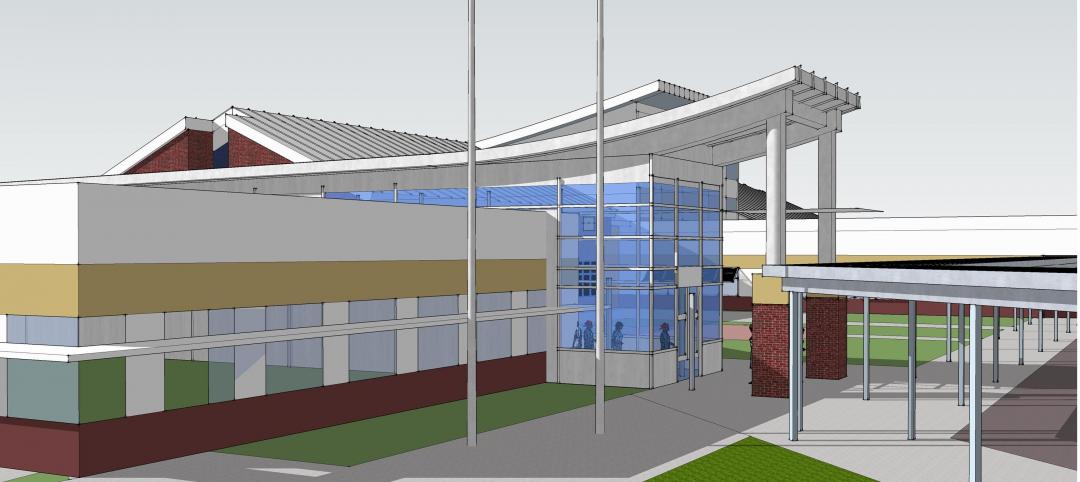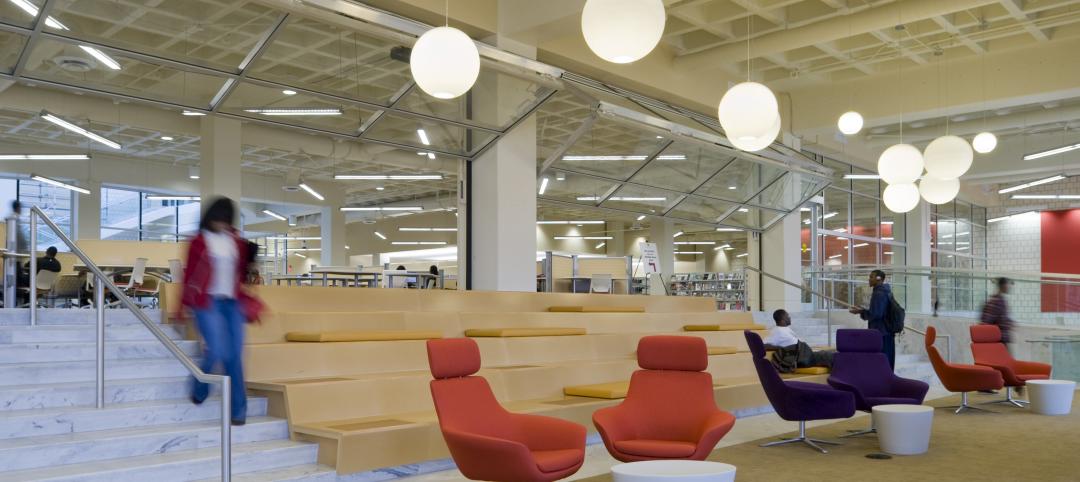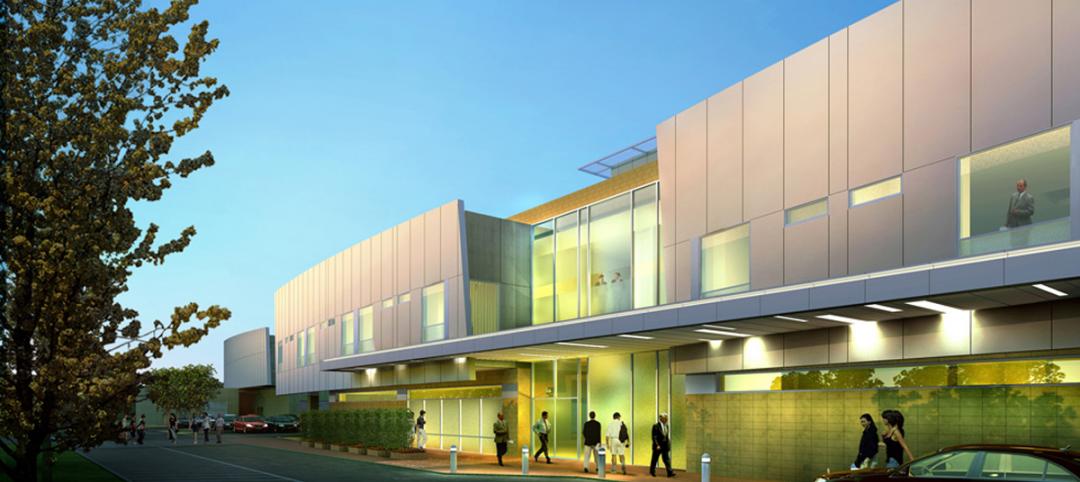 |
| The Whole Foods Market in Napa Valley boasts a 1,200-sf culinary center. |
Sectioning off large open spaces without making everything feel closed off was the challenge faced by two very different projects—one an upscale food market in Napa Valley, the other a corporate office in Southern California. Movable glass wall systems proved to be the solution in both projects.
The new Whole Foods Market in the heart of Napa Valley's wine country was designed to be a grander version of your typical neighborhood Whole Foods. A major enhancement, a 1,200-sf culinary center at the heart of the 50,000-sf store, needed to be closed off from the sales floor when cooking classes or private events were in session.
Closing off any part of the store, however, ran counter to the open-air market concept created by the San Francisco design firm Field Paoli. Their plan called for capturing the casual, indoor/outdoor lifestyle of Northern California by blurring internal/external boundaries. At the same time, they wanted to imbue the culinary center—an interior space—with a sense of connection to the outside.
 |
| A NanaWall system connects the center and the store, and provides privacy when cooking classes and special events are held. |
The architects had already specified a NanaWall door system on the front façade, and they felt that using NanaWall inside the store might offer that same sense of openness. "It's not often you see what's considered a storefront system in the interior of the space," says Christen Soares, an associate at Field Paoli. "But using NanaWall lends itself to the feeling of being open to the outside without actually being open to the exterior," she says.
The opening between the culinary center and the rest of the Whole Foods sales floor is about 20 feet wide. The curved, segmented door system used to section off the space consists of wood-framed glass panels roughly three feet wide, with two swinging panels for ingress and egress. The custom system can be completely opened or partially closed in a variety of configurations; the market typically keeps them wide open unless there's a class or event in progress. Privacy wasn't an issue, says Bill Brigham, principal at Field Paoli. "There are no blinds on the panels, it's all open. The intent was to have it as open as possible." Nor was noise a concern. "There was no worry about STC ratings," he says. "The culinary center opens into the 'Whole Body' department, which is soft goods—lotions and clothing rather than groceries—so it isn't a particularly noisy one."
"The whole point of using NanaWall inside and out was a cross-fertilization between indoor and outdoor, public and private space," says Brigham. "I feel like we've succeeded in enclosing space without making any of it them feel isolated."
 |
| When the Moveo wall systems are open, the BeachBody office in Santa Monica, Calif., has a multifunction, 2,500-sf great room . |
When BeachBody was moving its offices from Beverly Hills to Santa Monica, Calif., the health and fitness company wanted an open-plan space that would be flooded with natural daylight. Designers at Wolcott Architecture|Interiors of Culver City, Calif., were tasked with creating flexible conference spaces that offered privacy without blocking light from filtering into the office.
The architects devised an open great room concept for the office's entry, and located two conference rooms within the space that can be sectioned off with custom Moveo glass wall systems from Modernfold. When open, the space functions as one large, bright 2,500-sf great room for parties, meetings, and other large gatherings. When closed, the glass panel systems section the room into three light-filled spaces: reception and staff lounge, large conference room (550 sf), and medium conference room (325 sf). Seventy-five linear feet of glass panels are used in the great room.
In creating the room separations, the movable panels had to form two corners, and there could be no recessed tracks in the floor that would make it awkward using the space when it's fully opened. The glass panels also had to provide significant sound isolation. "These were huge issues, and it was a challenge finding something that worked," says Mika Yagi, senior designer at Wolcott.
 |
| When closed, the office has two conference rooms and a separate reception area/employee lounge. Note the unobtrusive solid corner panels. |
The corners were particularly difficult to configure. "We obviously didn't want corner posts, which would interrupt the great room concept, and we initially didn't want solid panels, which would block daylight," says Yagi. A structural element was needed, and a compromise was reached: Solid panels were positioned at the inside corners, making them virtually imperceptible and blocking little daylight when the conference rooms are in use.
It was also important to Yagi that the panels operate without channel tracks in the floor; the aluminum-framed panels are hung at the ceiling and manually opened and closed. When open, they stack against the wall rather than being stored in pockets.
To achieve acoustic privacy in the conference rooms, Yagi says she went through four different glass options before finally deciding on the Moveo system. "BeachBody wanted an STC rating of at least 43, which is what you typically get in a conference room with drywall construction," says Yagi. The Moveo system offered an STC rating of 45.
Yagi says the client is pleased with the final set-up. The office has a flexible, open-space plan, access to two private conference rooms, and plenty of daylight no matter how the conference rooms are configured.
Energy use has been cut by 25% compared to conventional office design, which helped earn the 55,000-sf space LEED CI Gold.
Related Stories
| May 15, 2012
Suffolk selected for Rosenwald Elementary modernization project
The 314-student station elementary school will undergo extensive modernization.
| May 15, 2012
Don’t be insulated from green building
Examining the roles of insulation and manufacturing in sustainability’s growth.
| May 14, 2012
SOM to break ground on supertall structure in China
The 1,740-feet (530-meter) tall tower will house offices, 300 service apartments and a 350-room, 5-star hotel beneath an arched top.
| May 9, 2012
Shepley Bulfinch given IIDA Design award for Woodruff Library?
The design challenges included creating an entry sequence to orient patrons and highlight services; establishing a sense of identity visible from the exterior; and providing a flexible extended-hours access for part of the learning commons.
| May 8, 2012
Skanska USA hires Zamrowski as senior project manager
In his new role at Skanska, Zamrowski will serve as the day-to-day on-site contact for select Pennsylvania-based projects during all phases of construction.
| May 7, 2012
4 more trends in higher-education facilities
Our series on college buildings continues with a look at new classroom designs, flexible space, collaboration areas, and the evolving role of the university library.
| May 3, 2012
2012 BUILDING TEAM AWARDS: Rush University Medical Center
This fully integrated Building Team opted for a multi-prime contracting strategy to keep construction going on Chicago’s Rush University Medical Center, despite the economic meltdown.
| May 3, 2012
Ground broken for $94 million hospital expansion at Scripps Encinitas
New facility to more than double emergency department size, boost inpatient beds by 43%.
| May 3, 2012
Rudolph and Sletten, Inc. wins CMAA award
Firm recognized for the renovation of Grossmont-Cuyamaca Community College’s Student Administrative & Griffin Student Center.
| May 2, 2012
Building Team completes two additions at UCLA
New student housing buildings are part of UCLA’s Northwest Campus Student Housing In-Fill Project.
















